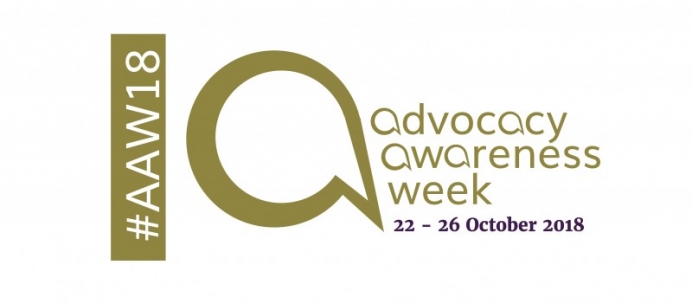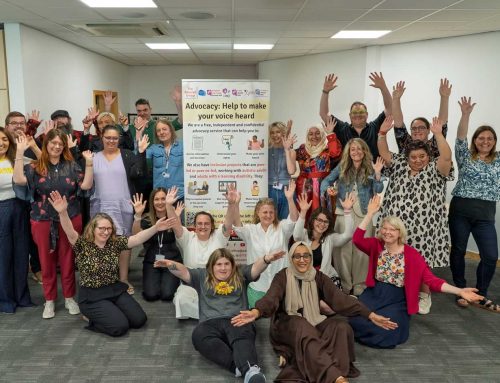By Gill Loomes, Leeds Autism AIM Peer Development Worker
Welcome to Advocacy Awareness Week 2018. During this week, we will be sharing this Mini Series, looking at how we explain advocacy work, in order to raise awareness. We will be thinking particularly about “Voice”, and what it means for advocacy. Here is Part 1, introducing the series. Watch out for Parts 2, 3, and 4 throughout the week (October 22-26, 2018)
Advocacy Awareness Week 2018 takes place between 22nd and 26th October. It provides us with an opportunity to raise awareness, and to celebrate the contribution that advocacy makes to the lives of individuals, and to our communities. It is also a key moment to communicate how advocacy works, what it can offer, and to whom; and it gives us a chance to reach out to our communities, to forge new links, to create new partnerships, and to (re)affirm our purpose as advocates.
“Advocacy? What’s that?”
For any of us who are involved in advocacy though, this focus on advocacy awareness probably raises a familiar issue – that of how to explain a concept that can be unfamiliar to many. It is not uncommon to tell people that you work or volunteer as an advocate, and to be asked what that involves, or to need to clarify that the term does not refer solely to legal advocacy, but embraces a wide range of community-based models of support.
If you have found yourself in the position of explaining what advocacy is, or if you have read, or produced literature introducing advocacy, and promoting the work of advocacy organizations, it is almost certain that you have found the word “voice” at the centre of the explanation. “Voice” is at the centre of advocacy, both linguistically and conceptually. But what do we mean by “voice”? What are we getting at when we say that advocacy aims to give people a “voice”, or to promote the “voice” of certain individuals or communities?
We probably take it for granted that in using the term “voice” in relation to advocacy, we are getting at something that goes beyond the literal operation of the vocal chords to produce sound. We are likely to agree that the term “voice” in relation to advocacy means something more metaphorical, more abstract and more wide-ranging than that. But how often do we really think about what we actually mean? And how often do we stop and interrogate this term that trips off the tongue in our accounts of our work as advocates? Do we ever discuss the term within our teams and organizations, and within the advocacy sector as a whole?
Having worked in the advocacy sector for over a decade, I’ve grown used to seeing the term “voice” as a ubiquitous feature in our explanations and justifications of what we do. But I wanted to dig deeper into the term, to see if in learning more about “voice”, in all its forms, I could develop innovative new ways of articulating what we do as advocates, in order to help us to communicate the crucial, life-enhancing work that we do. So, I have undertaken social research to explore what we mean by “voice”.
In the following parts of this mini-series, we’ll think about social “Voice” in more detail – looking at five key themes that form the concept of “Voice”, as a bridge between the individual and the world around them, and thinking about how this can help us explain advocacy, and raise awareness of our work. Look out for Parts 2, 3, and 4, that will be shared throughout Advocacy Awareness Week (22-26 October, 2018).[/vc_column_text][vc_empty_space][vc_separator color=”black” border_width=”5″][vc_empty_space][vc_column_text]












